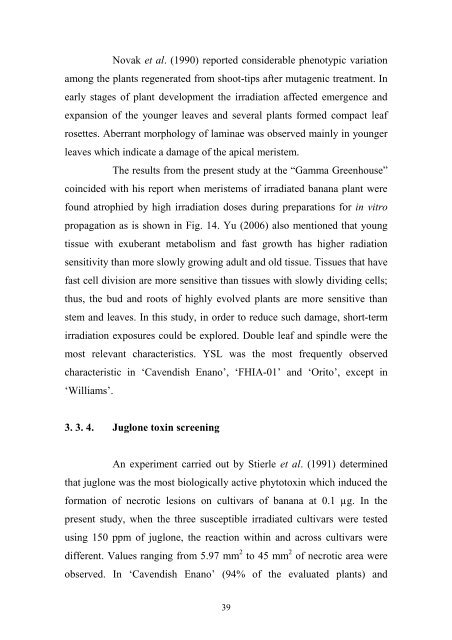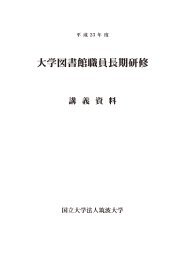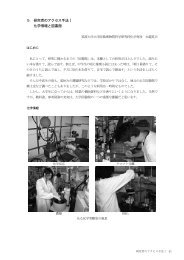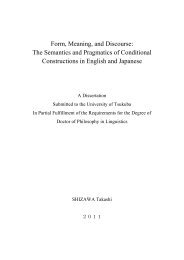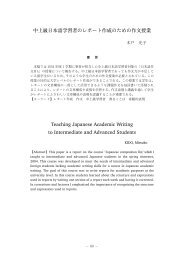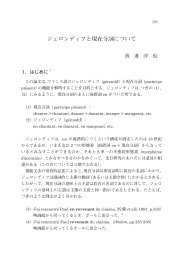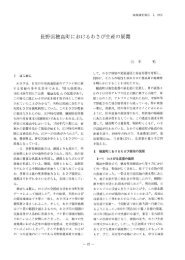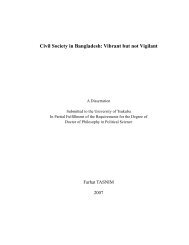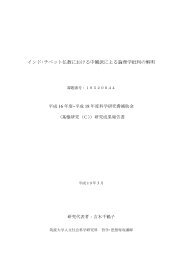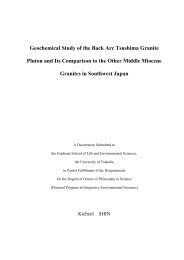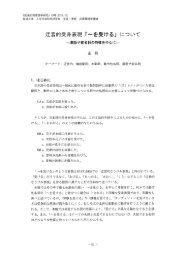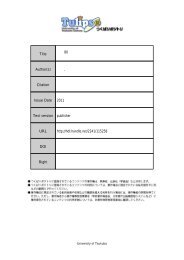Gamma Rays and CarbonIon-Beams Irradiation for Mutation ...
Gamma Rays and CarbonIon-Beams Irradiation for Mutation ...
Gamma Rays and CarbonIon-Beams Irradiation for Mutation ...
Create successful ePaper yourself
Turn your PDF publications into a flip-book with our unique Google optimized e-Paper software.
Novak et al. (1990) reported considerable phenotypic variation<br />
among the plants regenerated from shoot-tips after mutagenic treatment. In<br />
early stages of plant development the irradiation affected emergence <strong>and</strong><br />
expansion of the younger leaves <strong>and</strong> several plants <strong>for</strong>med compact leaf<br />
rosettes. Aberrant morphology of laminae was observed mainly in younger<br />
leaves which indicate a damage of the apical meristem.<br />
The results from the present study at the “<strong>Gamma</strong> Greenhouse”<br />
coincided with his report when meristems of irradiated banana plant were<br />
found atrophied by high irradiation doses during preparations <strong>for</strong> in vitro<br />
propagation as is shown in Fig. 14. Yu (2006) also mentioned that young<br />
tissue with exuberant metabolism <strong>and</strong> fast growth has higher radiation<br />
sensitivity than more slowly growing adult <strong>and</strong> old tissue. Tissues that have<br />
fast cell division are more sensitive than tissues with slowly dividing cells;<br />
thus, the bud <strong>and</strong> roots of highly evolved plants are more sensitive than<br />
stem <strong>and</strong> leaves. In this study, in order to reduce such damage, short-term<br />
irradiation exposures could be explored. Double leaf <strong>and</strong> spindle were the<br />
most relevant characteristics. YSL was the most frequently observed<br />
characteristic in ‘Cavendish Enano’, ‘FHIA-01’ <strong>and</strong> ‘Orito’, except in<br />
‘Williams’.<br />
3. 3. 4. Juglone toxin screening<br />
An experiment carried out by Stierle et al. (1991) determined<br />
that juglone was the most biologically active phytotoxin which induced the<br />
<strong>for</strong>mation of necrotic lesions on cultivars of banana at 0.1 µg. In the<br />
present study, when the three susceptible irradiated cultivars were tested<br />
using 150 ppm of juglone, the reaction within <strong>and</strong> across cultivars were<br />
different. Values ranging from 5.97 mm 2 to 45 mm 2 of necrotic area were<br />
observed. In ‘Cavendish Enano’ (94% of the evaluated plants) <strong>and</strong><br />
39


